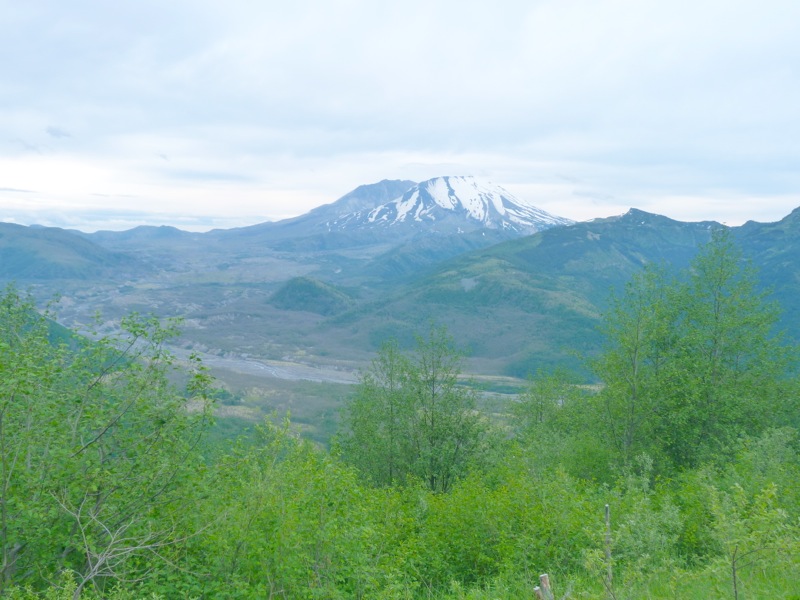Mount St. Helens: Destruction and Rebirth
 Monday, July 9, 2012 at 5:00AM
Monday, July 9, 2012 at 5:00AM Mount St. Helens erupted on May 18, 1980. It was the most destructive volcanic eruption in recorded US history. At 8:32 AM, a magnitude 5.1 earthquake occurred, and the north face of the mountain collapsed. The massive landslide was immediately followed by the forceful release of lava, pulverized rock, and volcanic gases. The pyroclastic flow traveled at over 600 miles per hour, killing 57 people and thousands, if not hundreds of thousands of animals within the blast zone. Estimates are that over 11 million fish perished. For many miles not one living thing above ground survived. Two hundred houses, twenty-seven bridges, fifteen miles of railway, and 185 miles of highway were destroyed. This public domain photo shows the eruption of Mount Saint Helens, May 18, 1980.
This public domain photo shows the eruption of Mount Saint Helens, May 18, 1980.
Recently I visited my son in Portland, Oregon, and we traveled to the Mount St. Helens area with Eco Tours of Oregon. As we drove up to the volcano we listened to recordings of eyewitness interviews and police dispatches, and we got a sense of the human and ecological tragedy.
Even now, thirty-two years later, the evidence of destruction is widespread, but so are signs of rebirth.
Here is the view of Mount St. Helens from our hotel room in Portland: The volcano is located in Washington, about 50 miles northeast of Portland, but through a zoom lens, it looks much closer!
The volcano is located in Washington, about 50 miles northeast of Portland, but through a zoom lens, it looks much closer!
Views of the volcano as we traveled closer and then into the blast zone, which covered 245 square miles:


Here are telephoto views into the volcano's crater. I took these shots from Johnston's Ridge, named after David Johnston, a young volcanologist who died there. Several smaller eruptions have occurred since 1980, the latest in 2008. There are glaciers inside the crater, and in the center a new dome growing. Looking closely, one can see steam arising from vents:
Many of the downed trees were removed by loggers after the eruption, but the remnants of others remain as silent witnesses to the devastation. Multitudes of trees were snapped off near the ground, and their stumps persist, dotting the hills like tombstones.
But amidst the decaying debris, there is life. After the eruption, there were survivors who had been protected in underground burrows and beneath the surface of waters, including rodents, frogs, salamanders, crawfish, and various insects. Some of these survivors pushed underground seeds toward the surface, where they sprouted and began to grow. Other seeds arrived on the wind or in bird droppings. A new landscape gradually emerged, and birds and other animals found homes there.
A number of lakes formed after the eruption. Coldwater Lake is one we visited:
Castle Lake, seen in the following photo, is another new lake created by topographic changes:
Visiting Mount St. Helens was a humbling experience. I was struck by the sobering power and regenerative forces of nature and by the supreme beauty of the area. It is a tour I highly recommend.
 Permalink
Permalink 